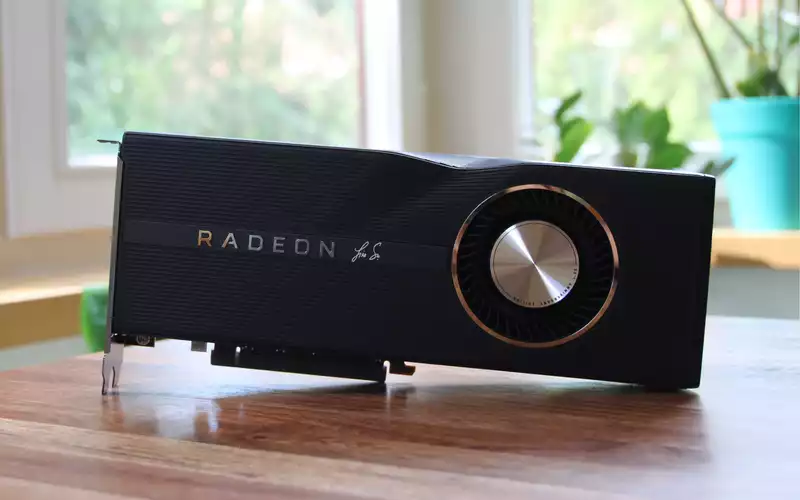AMD's upcoming high-end graphics card, currently dubbed "Big Navi," could be up to 50% faster than Nvidia's GeForce RTX 2080 Ti and challenge the upcoming GeForce RTX 3080
YouTube channel Moore's Law is Dead found information claiming that the Big Navi GPU will offer 40 to 50 percent more performance than Nvidia's current top-of-the-line graphics card, the GeForce RTX 2080 ti Moore's Law is Dead also stated that the source of such claims was made by "someone who has been right before on several occasions," but should still be taken with a grain of salt
According to leaked information, the Big Navi graphics card will also feature two clusters of compute units of 36CU each A total of 72 CUs equates to 4,608 stream processors, and when combined with a 384-bit bus, GDDR6 video memory, and a maximum clock speed of 2,510 MHz, the Big Navi should be able to beat the GeForce RTX 2080 Ti
For reference, the RTX 2080 Ti uses 4,352 CUDA cores, a 352-bit bus, and GDDR6, running at up to 1,545 MHz This is a powerful graphics card, but Big Navi seems to be able to rope this in
The GeForce RTX 3080 is considered Nvidia's next high-end graphics card and is set to offer up to 30% more performance than the RTX 2080 Ti Founder's Edition Therefore, if Big Navi could be up to 50% faster than the RTX 2080, it could break at the heels of the RTX 3080
Big Navi uses AMD's next-generation RDNA 2 graphics architecture, which promises to outperform the already high-performance RDNA core architecture in the Radeon RX 5700 XT; the GeForce RTX 3080 is based on Nvidia's new Ampere graphics architecture, promising increased performance and improved ray tracing capabilities
In other words, both of the upcoming GPUs, scheduled for release around September, will have a new graphics foundation Because specs are one thing, but how they perform in games and rendering tasks is another
AMD's move from the Graphics Core Next architecture to RDNA has improved the efficiency and performance of its graphics cards to some extent Sony and Microsoft have apparently adopted RDNA 2-based GPUs for the PS5 and Xbox Series X [GCN-based Radeon graphics cards tend to lose out to comparable Nvidia GPUs However, the new RDNA Radeon models, while not offering ray-tracing hardware, can compete with all but Nvidia's most powerful graphics cards
But Big Navi could change all that If released before the next generation of Ampere GeForce cards, it could steal a lot of Nvidia's thunder Even if it doesn't, AMD will be introducing a high-end graphics card into the GPU space
And that means more competition, which means better graphics cards at more competitive prices for PC gaming enthusiasts Next-generation consoles will dominate the discourse around gaming later this year, but as fall approaches, PC gamers still have much to look forward to










Comments